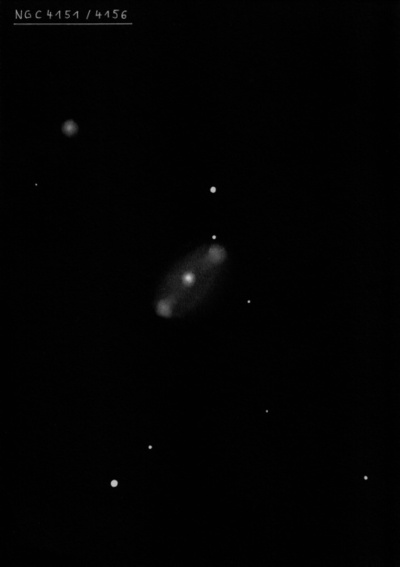
William Herschel discovered NGC 4151 = H I-165 = h1111, along with NGC 4156, on 17 Mar 1787 (sweep 714) and recorded "vB, A bright nucleus, but the nucleus not in the middle, or perhaps two joined together, the northern on having the nucleus." CH's reduction is on the northwest side of the halo.
On 26 April 1851 at Birr Castle, Bindon Stoney logged "Has a B, R centre with nucleus, then two dark spaces concentric with the nucleus and outside these faint nebulosity as in figure." Two night laters he noted "Previous observation rather confirmed. The dark spaces certainly exist, but I cannot be sure that appendages are not parts of spiral branches." The following year he wrote "Last year's observation confirmed as to dark curved spaces preceding and following centre and faint nebulosity outside them again." A sketch was included in the 1861 publication (Plate XXVII, Fig. 20).
NGC 4151 is one of the 6 galaxies studied by Seyfert in his seminal 1943 paper "Nuclear Emission in Spiral Nebulae".
300/350mm - 13.1" (3/17/86): very bright, very small or stellar nucleus, fainter halo. A mag 11.5 star is 2.3' N and a closer mag 13 star is 1.3' N of center. Forms a optical pair with NGC 4156 5.1' NE (the companion is in the background). NGC 4145 lies 29' N.
Notes by Steve Gottlieb